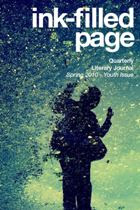 Girls of Riyadh by Rajaa Alsanea
Girls of Riyadh by Rajaa AlsaneaThere are stronger ways to describe a book than by comparing it to another work, and a book shouldn’t be recommended based on anything other than its writing. Yet Rajaa Alsanea’s first novel, Girls of Riyadh, demands both.
This is the Saudi Sex and the City (which is also a favorite show of one of the book’s main characters), following the lives—mostly the loves—of four female members of the elite “velvet class,” Gamrah, Sadeem, Lamees, and Michelle, and of the anonymous narrator, also of that station, who posts these stories in a Yahoo! group. Each chapter is short—sometimes snappy in its brevity, sometimes leaving the reader with questions—but by the end of the book, the reader has a good picture of a life few (if any) Sex and the City watchers know and about which all Westerners should be more aware.
Fortunately this book has more to recommend it than its setting. The narrator’s voice is strong and consistent throughout, painting a funny, smart, and curious young woman who observes Islamic holidays and quotes the Qur’an and who also paints her lips bright red before writing each post and who eats pickles and chili and lime chips, to keep her “reminded of the sharp flavor” of what she is about to write. Her introductions to the posts are some of the best parts of the book, as she shares not only details about herself but about the many people writing in to praise or condemn her characters, her telling of their stories, or both.
The book is difficult to connect with at first, but in hindsight that’s appropriate. The narrator is growing used to both her voice and her audience, and the reader rightly feels closer, more included, in later entries. It’s also important to remember that this wasn’t written for a Western audience—Alsanea originally published it two years ago in Lebanon. While a few footnotes explain some things—Arabic words or who a famous person referenced is—they don’t fill in all the gaps. The women eat at an Italian restaurant—what’s that like in Saudi Arabia? Gamrah meets her husband’s mistress and alternately refers to her as Japanese, Chinese, and Filipina. Is her confusion due to ignorance or fury, or does it say something larger about the view upper-class Saudis have toward Asians?
For the most part, though, the reader will be caught up in the story rather than in asking questions. There’s a lot of unique territory—from what Saudi Internet chat rooms are like to how much of an affect homosexuality, adoption, and tribalism have on social situations to what a wedding ceremony is like—covered in this book, but the universality is also clear: love and loss, forgiveness and revenge, humor. At one point, for more than a page, Sadeem talks to herself about a relationship gone wrong. Though some of her thoughts are clearly specific to her circumstances, the self-doubt and stream-of-consciousness questioning is very Young Woman, no matter where she lives.
The only question a reader should demand this work of chick lit have answered more fully is this: Who is Riyadh? The Saudi capital city aches to be a character: it’s in the title, and the characters are very aware of what city or region each comes from. What does Riyadh look like, smell like, taste like? Just as New York City sets a very distinct tone to Sex and the City, so Riyadh should for its Girls.
Review by Kristin Thiel, Indigo Editing, LLC
Girls of Riyadh
Publisher: Penguin Press
ISBN: 978-1-59420-121-9
Hardback, $24.95





No comments:
Post a Comment